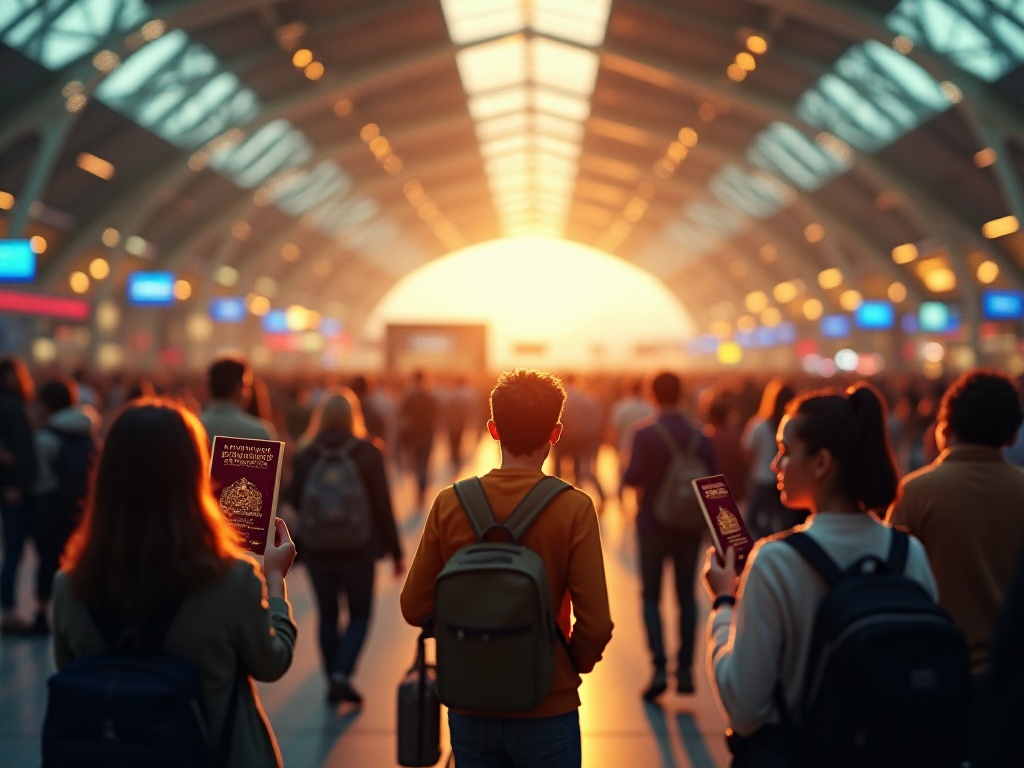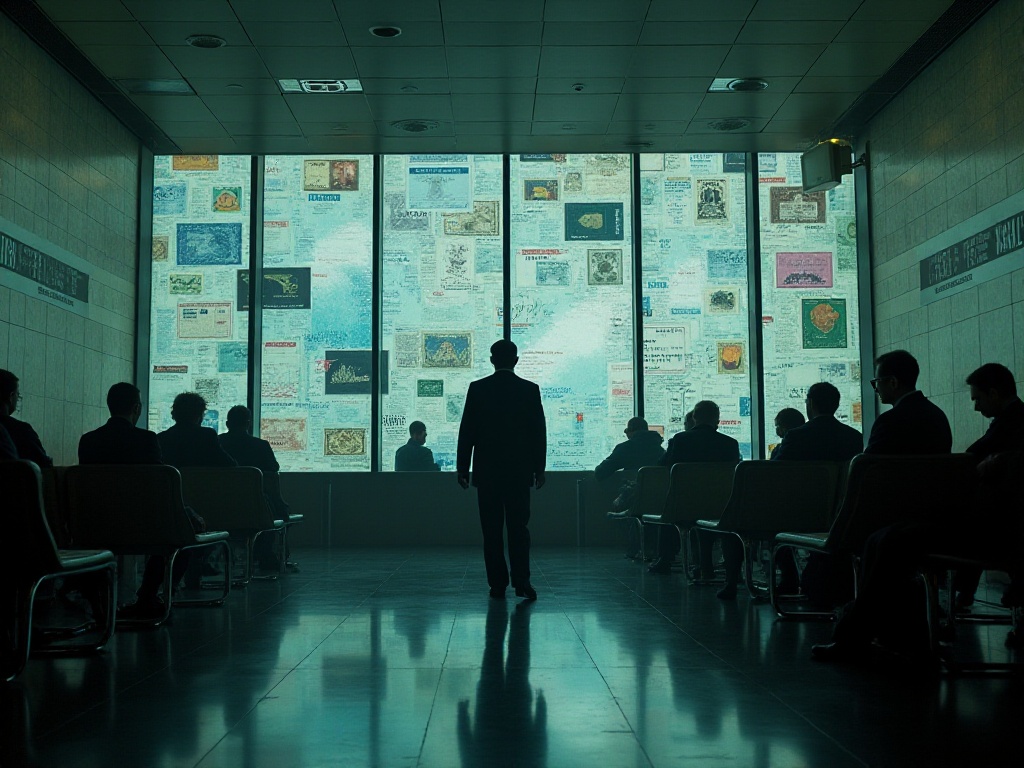Opening Chat
Hello everyone, I'm Old Yang. As a travel blogger who has been around, I've obtained visas for many countries over the years, making me quite the veteran in the visa world. To be honest, applying for visas becomes more intuitive with experience, especially U.S. visas - I have endless stories to tell. Recently, my inbox has been flooded with readers' questions about U.S. visas, so today I'll thoroughly discuss the topic of U.S. B1/B2 visas.
I remember being incredibly nervous during my first U.S. visa application, like a first-time relationship. Looking back, it's quite amusing - the process isn't actually that scary if you approach it correctly. Over the years, I've helped many friends with their visa applications, and seeing them progress from initial uncertainty to successfully obtaining their visas has been incredibly rewarding.
Basic Knowledge
The B1/B2 visa is the most common type of U.S. visa. B1 is for business, and B2 is for tourism. Interestingly, U.S. embassies usually issue a combined B1/B2 visa, allowing you to enter the country for either business or tourism purposes - incredibly convenient.
Did you know there's a reason behind this U.S. approach? The U.S. visa system is quite complex, with dozens of visa types. In 2019 alone, B-type visa applications reached 6.4 million - an astonishing number. With annual increases, the U.S. had to develop a detailed classification system for management.
Let me give you an example: if you're an employee sent to attend a business conference in the U.S., you'd need a B1 visa. But if you want to visit Disneyland for a couple of days after the conference, you'd need a B2 visa. With a B1/B2 combination visa, you don't have to worry about this - it's quite thoughtful.
Regarding visa validity, it's interesting to note that the U.S. has different validity periods for different countries, based on reciprocity principles. For Chinese citizens, B1/B2 visas are typically valid for 10 years with multiple entries, meaning you can visit the U.S. anytime within these 10 years, as long as each stay doesn't exceed 6 months.

Practical Tips
Honestly, the most challenging part of applying for a U.S. visa is the DS-160 form. The first time I filled it out, I nearly had a breakdown. Imagine about 200 questions, all in English, and some quite strange. For instance, they ask if you've ever been involved in drug cultivation - questions that make me laugh.
However, I'm now quite experienced with filling out the form. First, definitely use Chrome browser for its auto-translation feature - it saves a lot of trouble. Second, prepare all necessary materials before filling out the form, including passport, ID card, education certificates, work verification, etc. This makes the process much smoother.
Employment information is where many people make mistakes. Remember, your job title should be both truthful and professional. For example, instead of "HR," write "Human Resources Specialist"; rather than "Programmer," use "Software Engineer." But don't exaggerate - visa officers are experts and can easily spot when you're trying to oversell yourself.
Another crucial point is saving your progress. Make sure to save frequently while filling out the DS-160 form, as the system can crash unexpectedly. Nothing is worse than losing hours of work due to a system failure. I recommend saving after completing each page.
Regarding passport information, many think it's simple, but there are specific requirements. For instance, passport photos must be taken within 6 months, have a white background, no glasses, and a natural expression. If the photo doesn't meet requirements, you'll have to start over, so pay attention to this.

Interview Tips
The interview is perhaps the most exciting part of the entire application process. According to the U.S. Department of State, the global approval rate for B1/B2 visas in 2023 was around 80%. However, approval rates vary significantly by region, with Chinese applicants ranging between 65-75%. While these numbers might seem intimidating, there's no need to worry if you're well-prepared.
I still clearly remember my first visa interview. That morning, I wore a suit and arrived at the embassy two hours early. Honestly, the waiting was more nerve-wracking than the interview itself. When my turn came, the visa officer was a friendly middle-aged gentleman. He asked, "Why did you choose this time to visit the U.S.?" I naturally replied, "I'm a football fan and want to watch the Super Bowl in person - I've already bought tickets." I showed him the ticket stub. As it turned out, he was also a football fan, and we chatted briefly about the game, which really lightened the atmosphere.
Many people worry about interview attire. You don't need to be too formal, but don't be too casual either. I recommend men wear a dress shirt with slacks, and women wear simple business attire. The most important thing is to look neat and reliable.
Many worry about their English skills, but this really isn't a major concern. Visa officers typically ask simple questions about your job, length of stay, places you'll visit, etc. If you don't understand something, you can ask them to repeat it. I've seen people answer in Chinese and still get their visas approved.
Positioning during the interview is also important. Stand behind the yellow line, with your hands naturally at your sides or on the counter. Don't look around - focus on the visa officer to show respect. Speak at a moderate pace with clear voice, which conveys reliability.

Common Misconceptions
There are many misconceptions, the most common being that more savings is better. I know someone who borrowed a million yuan to put in their account, but the visa officer saw right through it and rejected the application. For typical white-collar workers, having a stable job with a monthly income of 10-20 thousand yuan and assets of about 100 thousand yuan is sufficient. The key is convincing the visa officer you have sufficient reasons to return to China.
Some people think they need to prepare as many documents as possible, ending up with lots of unnecessary materials. I have a friend who brought an entire folder of documents to the interview, but the visa officer didn't even look at them. Why? Because visa officers care more about your interview performance than the amount of documentation you bring.
Many people wrongly believe they must use an agency. Honestly, U.S. visa applications are among the least likely to require an agency. While the application process may seem complex, it's actually quite logical, and you can handle it yourself. Doing it yourself also gives you a better understanding of the process, which is helpful for future renewals or helping others.
Another common misconception is that you must own a house and car to apply for a U.S. visa. This is completely wrong. Visa officers care more about your social ties and career prospects. For example, if you're a young entrepreneur without many fixed assets but your business is growing, you might actually have a better chance of getting the visa.

Experienced Advice
Through years of experience, I've gathered some useful tips. First, honesty is truly the best policy. According to U.S. Immigration data, over 20,000 cases of document fraud were discovered in 2023, resulting in 10-year entry bans. With interconnected information systems between countries, fraud can affect not only U.S. visa applications but applications for other countries as well.
Maintaining a relaxed attitude during the interview is crucial. Did you know each visa officer interviews over 100 applicants daily? They particularly dislike people who obviously memorized their answers. I suggest treating it as a normal conversation and expressing yourself naturally.
Thorough preparation is important, not for memorization but for confidence. For example, practice self-introduction and answering common questions in English. This preparation isn't for memorization but to help you remain composed during the interview.
I also recommend carefully planning your itinerary before applying. You don't need to plan every day in detail, but having a general idea helps make your application more convincing and helps you better answer the visa officer's questions.
Choosing the interview time is also strategic. From my observation, morning interviews tend to be better than afternoon ones. Visa officers are more energetic and typically in better moods in the morning. There are usually fewer people, resulting in shorter waiting times.

Conclusion and Future Outlook
With global tourism booming, U.S. visa applications are expected to reach new heights in 2024. The U.S. Department of State predicts global B1/B2 visa applications might exceed 7 million. While this number seems daunting, it shows that international travel has become commonplace.
U.S. embassies continue to optimize the application process, such as recent interview waiver policies, which are great news for eligible applicants. This is particularly beneficial for business travelers who frequently visit the U.S., saving them time and effort.
Looking at future trends, the U.S. is likely to further simplify the visa application process. This might include more interview waiver channels or increased electronic services. These are all positive developments, suggesting that applying for U.S. visas will become increasingly convenient.
After all this discussion, do you feel more confident about applying for a U.S. visa? It's really like taking an exam - if you prepare carefully and remain honest, you'll surely succeed. If you have any questions, feel free to comment below. There's still much more we can discuss about U.S. visas.
Remember, applying for a visa isn't scary - the key is maintaining a normal mindset. I hope this article helps you avoid some pitfalls and achieve your American dream sooner.


